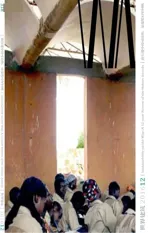城中戏水
2016-12-21
城中戏水
Splashing Out in the City
多年来,有一群建筑师、设计师和艺术家一直在致力于一个富有远见的项目:修建柏林中部一条河道上的巨型游泳池。最初,这个想法似乎与市中心的正规庄严不相称——但是对城市更新和修复来说可能是很大的支持,将会改变这个标志性区域的面貌。
博物馆岛是柏林城市旅游的中心,也是世界上最重要的博物馆群之一。博物馆岛集重大建筑与文化价值于一体,其地位独一无二,自1999年起就被联合国教科文组织列为世界遗产。但是,该岛不仅是高层次的文化场所,也是日常的娱乐天堂:库佛尔格拉班位于岛的东边,是施普雷河一个废弃河汊上的一条400m长的运河,天气好的时候,成百上千的人聚集在这里狂欢。他们在这从柏林市中心流过的原始清新的河水中游弋、戏水。
此处人称“Flussbad”或河流泳池,有17个奥运会游泳池那么大,主要为本地人开放,是他们的一个重要娱乐区。在博物馆岛上,有携家带口身着泳衣的本地居民,也有来自世界各地的游客,他们和谐共处,互不相扰。这就是柏林,一个宽容、多样化的城市,同一个空间,多用途并存。
具有耐力的理想家
但是,无论是谁,要想体验德国首都中心的河流泳池,都需要耐心。因为,这个景点目前仍然只在纸上。库佛尔格拉班还只是一条运河。要让泳衣成为来柏林游客的必备服装,尚需几年的努力。但这并不意味着这个愿景无法成为现实。该项目的作者已经证明他们有足够的耐心:他们已经为自己的项目努力了15年。这一切始于1997年,当时,他们在柏林共同创立了艺术团体 “艺术和技术”。这个由艺术家、设计师和建筑师组成的非正式团体背后,有蒂姆和扬·埃德勒的驱动力。这两位建筑师是兄弟,分别出生于1965和1970年,他们都从事建筑研究,并在2000年联合建立了实体:他们自己的艺术和建筑工作室。他们在媒体型艺术装置和建筑附件的发展中建立了国际声誉;他们最知名的作品可能是格拉茨艺术馆的“BIX Façade”。
回到1997年,“艺术和技术”这个艺术家团体。“当时,我们发起了相当天真的项目,我们发现这些项目比我们以往的工作更有趣。” 蒂姆·埃德勒回忆说。虽然这个由满腔热情的年轻人组成的团队可能没有受到强烈关注,但它策划了一系列令人兴奋的项目,比如一个红火的酒吧。蒂姆·埃德勒称:“这个酒吧在财务上的成功使我们可以进行其他项目。”
从生命线到废水沟
其中之一就是这个河流泳池。这个想法在这个艺术团体刚刚组成的第一年就产生了。蒂姆·埃德勒说道:“一个灵感是,我们这个团体的办公室靠近水,在博德博物馆正对面的库佛尔格拉班上。我们经常谈论跳进河里凉快凉快会有多爽;令我们惊诧的是,库佛尔格拉班已经被闲置120年了。”在过去的几个世纪里,施普雷河有多种多样的用途,在城市的早期主要作为运输路线,后来提供能源、防御手段和灌溉。从19世纪起,对这条河的需求越来越少,最后,该市开始往废弃河段填东西,例如,第二次世界大战后,大量需要处理的瓦砾被填进河里。这座城市过去的生命线沦落为废水沟。这一点可以从柏林内城区的混合废水系统看出,它不会将雨水和废水分开,因此,大雨过后,溢流就直接流入施普雷河。结果,本应在下水道里流的废水流到了河里。这不仅大煞风景,而且也危害健康。所以城市行政部门明确建议不要在施普雷河游泳。整个柏林连一个河流泳池都没有,也没有一处可以与水亲近的地方;你得到市外才能找到一段没有堤墙的河岸。
人人免费入场
这些障碍并没有阻止这个团体发展其项目。他们的愿景是:一个巨型游泳池,一个在废弃的河道上以世界著名的博物馆岛为背景且拥有21,400m2水面的河流泳池。从柏林大教堂前面和未来的都市城堡前面的卢斯特花园广场,沿宽阔的台阶一直走到水边。虽然设计包括威廉一世前国家纪念碑基座上的不显眼的功能改变设施和储物柜,但该河流泳池明确设定为公共设施:任何人都可以跳进去凉快或游泳,不需付费入场。
有两项措施保证泳客不会在废水中游泳。目前,有6个紧急出口的污水溢流流入运河;本项目将把这些溢流引到溢流管道从泳池地下流走。此外,泳池上游的河道中还会安装一个水过滤器:流入运河的受控水流在经过780m长的过滤盆时将以自然方式得到净化。
390m的过滤器
这个建筑面积为7200m2的湿地由0.8m厚的砾石过滤器组成,覆盖平均深度约0.5m的水。这个过滤器能够把流入的不纯净河水净化到饮用水的质量。过滤后的水经收集通过砂填料下方的排水管道排出。上部被设计为线性公园,种植着各种沼泽、浅水和深水植物。最上游640m的河段将进行改造。为此,北岸的堤墙将完全拆除,河道缓缓扩展到渔夫岛的地面。作为辅助目的,该河段用作内城绿化区和初级净水器。这个河道支流的主要实际目的是作为野生动物避难所,以为柏林市区内的施普雷河主河道河岸动植物群落的重新安置提供支持。“总之,施普雷河就是一条饱受压迫的河。”
蒂姆·埃德勒指出:“这条河的自我再生能力仍很脆弱,对环境变化非常敏感:例如,在高温下很快就形成蓝绿藻。”但是经过一定的时间,条件逐渐变得有利于项目:施普雷河的主要污染源——劳希茨地区的褐煤露天采矿稳定减少,这意味着今天流到柏林的水比以前清洁了,因此,对以植物为基础的废水处理系统的需求将低于最初的预设。
时代的曙光
这些作者把他们的想法公之于众的时候,他们对人们可能的反应没抱任何幻想。“我们知道河流泳池不符合时代精神,”蒂姆·埃德勒说。随后,在统一后不到10年的时间里,柏林飞速发展。到处都在进行大规模的建设。在蒂姆·埃德勒看来:“人们希望正在建造的建筑类型重现19世纪柏林黄金时代的风貌。”通过回顾过去,对新身份的探索产生了极为重视威望的衍生架构。“在这个时代,轻松的概念很难被认可;建筑倾向于僵硬和正式。”但他认为已有明显的迹象表明这个时代已经结束。漫步在城市中,你会得到一个不同的印象:到处仍在建设相当夸张的建筑。但蒂姆·埃德勒说,这些想法出现在前一段时间,现在正逐渐消失。他依然相信:“事情正在发生变化!例如,参议院城市新的规划总监对比较放松的项目态度更加开放。”埃德勒继续说,大型项目减少是因为无法再获得所需的巨大空间,公众对大项目的批评越来越强烈。他评论道:“很长时间以来,大家对于地方上对建筑的态度不加质疑。人们认为,不同的意见会损害他人利益。因此,变化的力量更大。”

5 过滤水池景象/View of filter basin
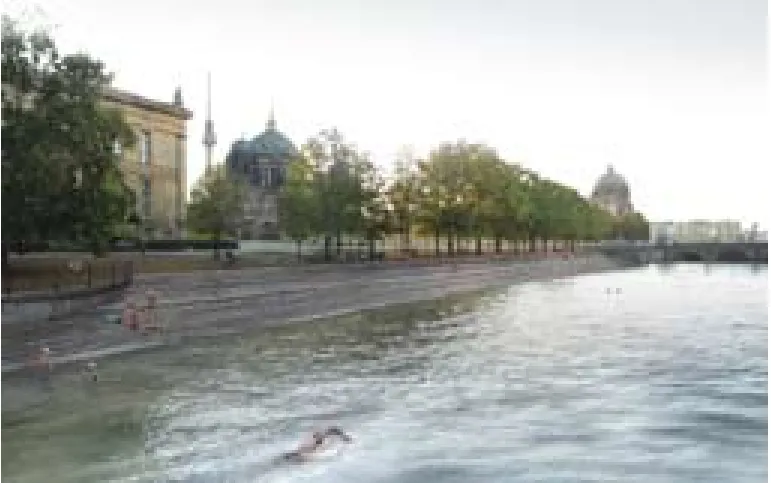
6 泳池区域景象/View of pool area

7 游泳池剖面/Section of swimming pool
从愿景到项目
设计者们希望项目产生的影响远远超出其直接意义——河流泳池只是一个开始。蒂姆·埃德勒指出问题在于快速升级的内城区密度。“许多非正式娱乐空间已不复存在,娱乐和运动空间也相应减少。当然,我们的河流泳池也无法提供与拥有大草坪的豪华海滨浴场相匹敌的场所供市民娱乐。但它将是一个独特的体育设施,给人们带来美好信息:看看你的城市有什么可能性——是时候采取行动了!”在早年,他们的理念被视为乌托邦,如今,已受到各界的认真对待。“你可以感觉到柏林正在酝酿新发展,”这位建筑师说,“这个城市正在变得更加模糊和多样化。”在这种情况下,河流泳池提供了新的可能性,通过转换现有环境,认识到这个河流泳池所需的一切早已存在。正如埃德勒指出的那样:“近年来,自然界在我们的生活中所起的作用愈加重要,在这个过程中,我们学会了以不同的方式看待水。”河滨已成为理想场所,咖啡馆、酒吧和餐馆迁到了施普雷河岸上;这个城市的昔日后院现在变成了它的名片。
吊胃口
蒂姆·埃德勒认为,对这条河的兴趣将继续日益增长,相信这一点绝对没错。在此期间,他和他的兄弟把他们的项目提交给柏林政府参议院。“到目前为止,参议院一直采取非常合作的态度,”这位建筑师说,“显然,我们的项目与其他措施密切相关。毕竟,混合水下水道系统必须进行一定的更新,沿河岸的所有挡土墙都必须改造,这会引发很多潜在的协同效应。”当然,要保持施普雷河一直洁净,需要为新下水道系统投入大量金钱。但蒂姆·埃德勒坚信:“问题不在于金钱,而在保持清醒——有欲则变。一旦人们认识到河流的存在意义不是仅仅为了缓解交通压力,城市就会为其清洁进行投资。我们这个项目最有价值的方面,就是它能够激发人们的欲望。”
预料之中的异议
虽然柏林的许多人都对市中心有个河流泳池喜闻乐见,但设计者也预料到会遭遇异议。以植物为基础的废水处理站附近有住宅楼——那里的住户会不会因为这些植物有可能滋生蚊子而反对本项目呢?博物馆会对本项目有什么反应呢?蒂姆·埃德勒认为,柏林的保守派不可能马上就支持一个河岸日常利用的项目:“如果鲜有质疑,我会很惊讶。”卢斯特花园的一些挡土墙会受到河流泳池的影响,它们是由塑造19世纪普鲁士的新古典主义风格和柏林风貌的杰出建筑师中最负盛名的卡尔·弗里德里希·申克尔设计的。任何有可能影响与他有关的建筑的企图都会引发反对。博物馆岛是一个旅游圣地,这也使创新变得很棘手。蒂姆·埃德勒对此很清楚:“博物馆岛是柏林的圣杯,可以这么说——你必须极其谨慎地提出干预。”这位建筑师提出的另一个问题是施普雷河的法律地位,它是联邦水道,因此属联邦所有,柏林在这个问题上没什么话语权。关于这种水道的决定几乎完全取决于船运的需要,尽管从统计数据可以看出,施普雷河上的货运量正在锐减。
有魅力的项目
在豪瑞奖参赛项目资料中,设计者将预计开工期定为2018年。蒂姆·埃德勒承认,“这当然是乐观计划,这个日期是不确定的。不过,我认为10年后在我们这个河流泳池里畅游还是有可能的。”对于这个讨论的政治层面很难说什么,但蒂姆·埃德勒再次强调:“本项目特别适合柏林这个悠闲的城市。 我并非推崇过去20年中地方整治趋势,其他许多人也有同感。”有趣之处在于这会导致:条条框框太多不利于大都市。每个城市都需要非正规、未完成的商业元素。矛盾也有其魅力,抹杀个性会造成严重后果。“Flussbad项目的一个伟大之处是,位置极公开、人流量极大。我们不是填补边边角角,而是让本就极具魅力的地方更有吸引力!”
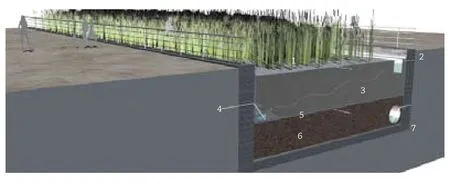
1-芦苇床/Reedbed2-河水道/Riverwater canal3-200cm厚卵石填埋/200cm Pebblefill4-排水管泳池道清水/Drainwater pipe clean water for pool5-密封层/Sealing6-土填埋/Soilfill7-溢水管约100cm/Spillwater pipe ca. 100cm

8 水处理及泳池详图/Details of water-treatment and pool
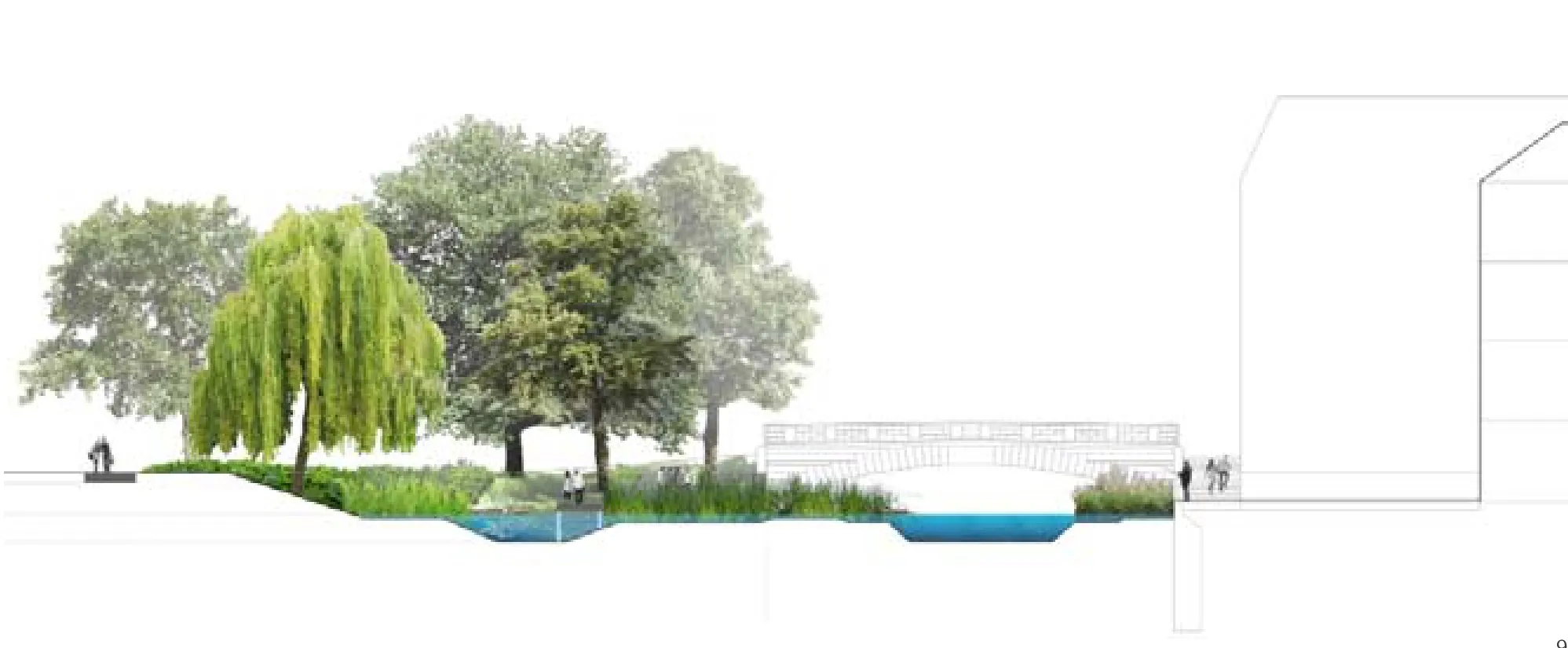
9 还原后的自然河流剖面/Section of renaturized river
A collective of architects, designers and artists has been pursuing a visionary project for years: a gigantic swimming pool on a river arm in the middle of Berlin. Initially the idea was seen as incongruent with the formal grandeur of the city center – but support for urban renewal and remediation may yet change the face of this iconic precinct.
The Museum Island is the heart of touristic Berlin and one of the most important museum complexes in the world. Since 1999 the Museum Island, a unique ensemble of architectural and cultural importance, has been a UNESCO World Heritage site. But the island could be the scene not only of high culture, but also of everyday pleasures: in good weather, hundreds of people congregate on the east side of the island, along the Kupfergraben, a 400m canal on a disused arm of the River Spree. Tey bathe and splash in the pristine water of the river, which flows through the center of Berlin.
The so-called Flussbad, or river pool, is as big as 17 Olympic-sized swimming pools, and intended primarily for locals, for whom the pool is an important recreation area. On the Museum Island families in bathing costumes mix with tourists from all over the world, without anybody being bothered by it. That is Berlin: a tolerant, diverse city offering varied uses of space alongside one another.
Visionaries with staying power
But whoever wants to experience a river pool in the heart of the German capital will need patience. As yet this attraction is still only on paper. The Kupfergraben is still just a canal. It will take years before a bathing costume is indispensable attire for a visit to Berlin. But this does not mean that the vision cannot become reality. The authors of the project have already demonstrated that patience is not something they are about to run out of: they have been pursuing their project for the past 15 years. It all began in 1997, when they co-founded the art group Kunst und Technik (art and technology) in Berlin. Among the driving forces behind the informal collective of artists, designers, and architects were Tim and Jan Edler, two architects. Born in 1965 and 1970 respectively, the brothers studied architecture and in 2000 founded realities: united, their own studio for art and architecture. They have built up an international reputation in the development of media-oriented art installations and building addons; their best-known work is probably the BIX Façade of the Kunsthaus Graz.
But back to 1997 and the artists' collective Kunst und Technik. "At the time we initiated rather naive projects that we found more interesting than what we usually worked on," Tim Edler recalls. Although the collective of enthusiastic young people may not have been terribly focused, it masterminded a number of exciting projects, for instance a flourishing bar. According to Tim Edler, "The bar's financial success made it possible for us to pursue other projects."
From lifeline to wastewater canal
One of these was the river pool. Te idea arose in the art group's first year. Tim Edler recounts: "One inspiration was the fact that the collective's office was close to the water, on the Kupfergraben directly opposite the Bode Museum. We often talked about how nice it would be to jump into the river to cool off; we found it bizarre that the Kupfergraben had not been used for 120 years." Over the centuries the River Spree has had various uses, in the city's early days primarily as a transport route, and later to provide energy, a means of defense, and irrigation. From the 19th century onward fewer demands were made on the river and eventually the city started to fill in disused sections of the river, for instance after World War II, when enormous quantities of rubble needed to be disposed of. The city's former lifeline degenerated into a wastewater canal. Tis is evident from the mixed waste-water system in Berlin's inner city districts, which does not separate rainwater from wastewater, so that after heavy rainfall the overflow runs directly into the Spree. As a result, also wastewater that should flow through the sewers ends up in the river. This is not only unappetizing, but also a health hazard. This explains why the city administration expressly advises against swimming in the Spree. In all of Berlin there is not a single river pool and no direct access to the water anywhere; you have to leave the city to find a stretch of river bank without a quay wall.
Free admission for everybody
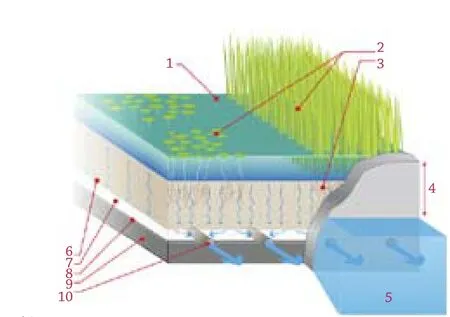
10 过滤水池功能图解/Functional diagram of filter basin
Tese drawbacks did not deter the collective from developing its project. Their vision: a gigantic pool, a river pool, with a water surface of 21,400 square meters in the disused river arm against the backdrop of the world-famous Museum Island. A broad bank ofsteps leads from the Lustgarten, the square in front of Berliner Dom (Berlin Cathedral), and in front of the future reincarnation of the Stadt-Schloss (City Castle) right down to the edge of the water. While the design includes unobtrusive functional changing facilities and lockers in the pedestal of the former national monument for Kaiser Wilhelm I., the river pool is explicitly conceived of as a public amenity: anybody can jump in to cool off or swim without paying for admission.
Two measures will ensure that bathers do not find themselves swimming in wastewater. Currently, the sewage overflow from six emergency outlets spills into the canal; the project will channel this overflow into a spill water pipe that will run under the river pool. In addition there will be a water filter in the river above the pool: the controlled flow of water into the canal will be purified by natural means as it passes over a 780-meter-long filter basin.
A filter 390 meters long
This 7200 square meters constructed wetland consists of a gravel filter 0.8 meter thick, covered by an average of about 0.5 meter of water. The filter is able to purify inflowing impure river water to the quality of drinking water. The filtered water is collected and led away through drainage pipes below the sand packing. The upper side is planted everywhere with various marsh, shallow-water, and deep-water plants, designed as a linear public park. The 640-meter uppermost section of the river that continues from there will be renaturized. To this end, the northern shore wall will be completely removed and the course of the river gently widened into the grounds of the Fischerinsel. As an auxiliary purpose, this section serves as an inner city green area and preliminary water purifier. Te actual main purpose of this side arm of the river is as a wildlife refuge, to support the resettling of riparian flora and fauna in the channeled main arm of the Spree River in Berlin's urban area. "Te Spree as a whole is a stressed river,"
Tim Edler remarks, "its self-regenerating powers are still weak, and the river is very susceptible to environmental changes: at high temperatures, for example, blue-green algae quickly form." But time has worked in favor of the project: the steady reduction in lignite open-cast mining in the Lausitz region, which was a major source of pollution in the River Spree, means that the water that reaches Berlin today is cleaner than it was used to be, and that, in turn, means that demands on the plant-based wastewater treatment system will be lower than initially assumed.
The dawning of an age

11 河流规划/River schemes
When the authors went public with their idea they were under no illusion about people's likely reactions. "We knew that the river pool was not in keeping with the spirit of the time," Tim Edler says. Ten, less than a decade after reunification, Berlin was caught up in a frenzy of development. Massive buildings were going up everywhere. In Tim Edler's view, "Te types of structures being built were expected to recreate the sense of what was believed to be Berlin's golden age in the 19th century." By looking back to the past, the search for a new identity produced an extremely prestige-focused derivative architecture. "Concepts of lightness found little recognition at this time; architecture tended to be stiff and formal." But he thinks that there are clear signs that this epoch is over. A stroll through the city leaves a different impression: rather bombastic building projects are still going up all over the place. But Tim Edler says that these are ideas of the recent past that are now being worked off. He remains confident: "Change is happening! For example, the new Senate's director of urban planning is more open toward lighter projects." Edler continues that colossal projects are also becoming rarer because the enormous amount of space they require is no longer available and public criticism of monumental projects is growing louder. He comments: "For a long time many people did not question the local attitude to architecture. It was thought that a different opinion would be damaging to one's interests. As a result, the force of change is all the greater."
From vision to project
The authors hope that their project will produce an impact far beyond its immediate significance – the river pool as kick-off pool. Tim Edler points to the rapidly escalating inner-city density. "Many informal recreational spaces no longer exist, with a corresponding loss of space for recreation and sport. Of course, our river pool would not offer the quality of a typical lido with a large lawn for hanging out. But it would be a unique sports facility and a wonderful message for people: just look what is possible in your city – now do something about the rest!" Whereas in earlier years their concept was regarded as utopian, today it is taken more seriously. "You can just sense that new developments are afoot in Berlin," the architect remarks. "The city is becoming more ambiguous and diverse." In this context the river pool offers new possibilities by converting an existing context – just about everything needed to realize the river pool is already there. As Edler points out, "In recent years nature has come to play a far more important role in our lives and in the process we have learned to see water differently." The river front has become a desirable address and cafés, bars and restaurants have moved onto the bank of the Spree; the city's onetime backyard is now its calling card.

12 地点位于柏林中心/Location in Berlin's Center
Whetting appetites
Tim Edler does not think it misplaced to believe that this growing interest in the river will continue. In the meantime, he and his brother have presented their project to the Senate, the government of Berlin. "So far the Senate has adopted a very cooperative attitude," the architect says. "Evidently our project ties in well with other measures. The mixed water sewage system will have to be renewed at some point anyway, and all the retaining walls along the riverfront will have to be rehabilitated, which speaks for a lot of potential synergies." Of course, it will cost a lot of money to put in a new sewage system to keep the River Spree clean all the time. But Tim Edler is convinced that "money is not necessarily the problem. It is about being aware: when the appetite has been sparked, changes are possible. Once people accept that the river is not there only for the declining volume of traffic, the city will also invest in its cleanliness. Te most valuable aspect of our project is that it could whet people's appetites."
Opposition expected
Even though many people in Berlin would welcome a river pool in the middle of the city, the authors expect opposition. There are residential buildings close to the plant-based wastewater treatment plants – will the inhabitants object to the project because they think the plant will attract mosquitoes? And how will the museums react to the project? Tim Edler thinks that it is unlikely that the voices of conservatism in Berlin will rush to support a project for everyday utilization of the river bank: "I would be very surprised if there was not a lot of skepticism." Some of the quay walls along Lustgarten that will be affected by the river pool were designed by Karl-Friedrich Schinkel, the master architect who more than anybody else shaped the neo-classical taste of 19th century Prussia and the appearance of Berlin. Any attempt to interfere with structures associated with him triggers opposition. Te Museum Island is a tourist magnet, which also makes innovations tricky. Tim Edler is well aware of this: "The Museum Island is Berlin's holy grail, so to speak – you have to be very careful about proposing interventions." Another problem raised by the architect is the river's legal status as a federal waterway and thus federal property; Berlin has little say in the matter. Decisions concerning such waterways are determined almost solely by the needs of shipping, although from statistical evidence it is clear that the transportation of goods on the Spree is declining.
Project with appeal
In the project data for the Holcim Awards competition the authors gave 2018 as the estimated start of construction. Tim Edler admits that "this is optimistic planning, of course, and the date is uncertain. Nevertheless, I think it is possible that we could be swimming in the river pool before the end of the decade." It is difficult to say anything about the political dimension of the discussion, but Tim Edler emphasizes once again: "Te project is right for Berlin, which is a fairly laid-back city. I am not a fan of the trend in the past 20 years of tidying up places, and many others feel the same way." Te interesting point is what this leads to: too much orderliness is harmful for a metropolis. Every city needs an element of non-conformism, of unfinished business. Contradictions also have their charm, and getting rid of character can have serious consequences. "One of the great things about the Flussbad project is that the location is exceptionally public and exceptionally accessible. We are not occupying some or other secluded niche, we are developing something with real appeal!"
